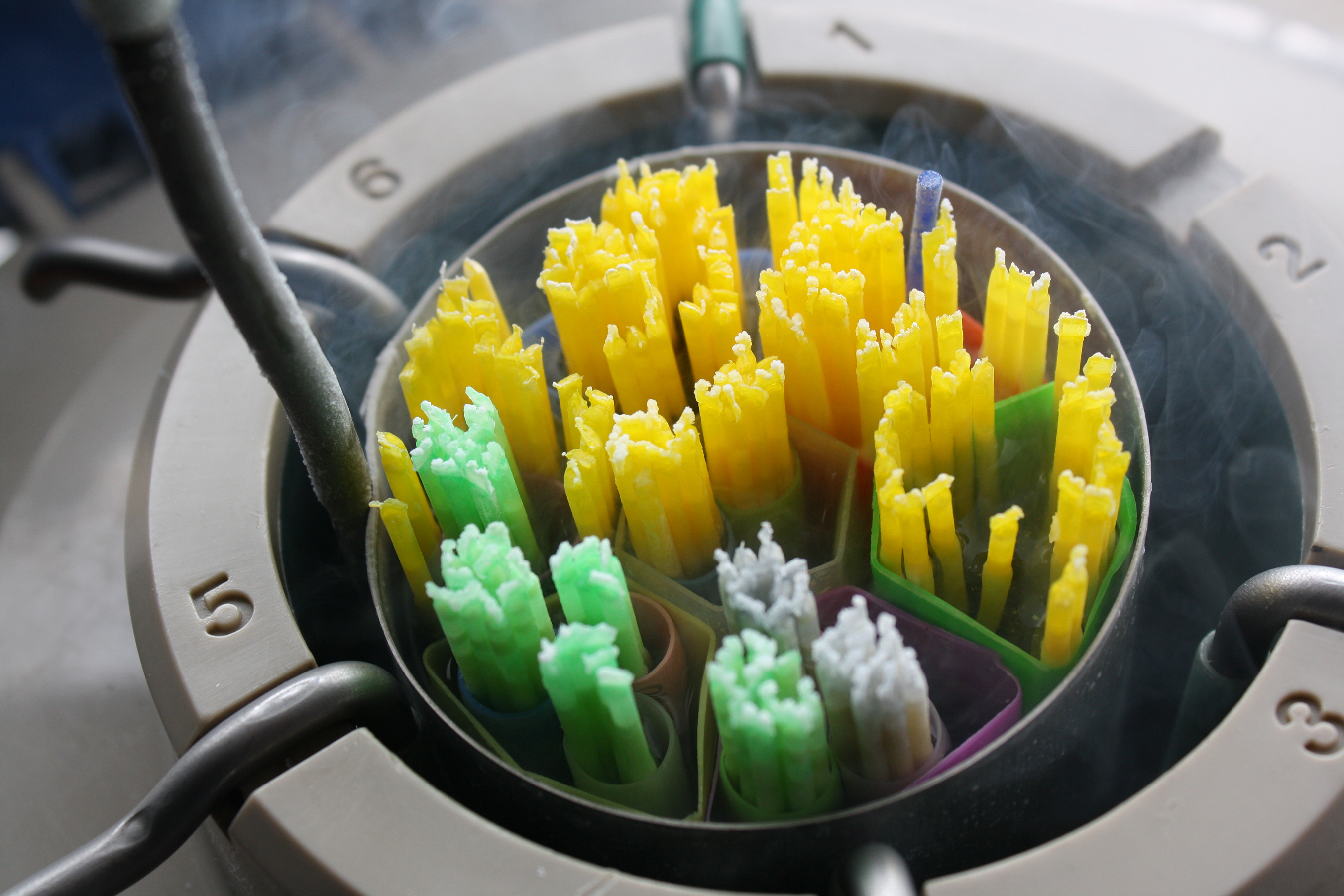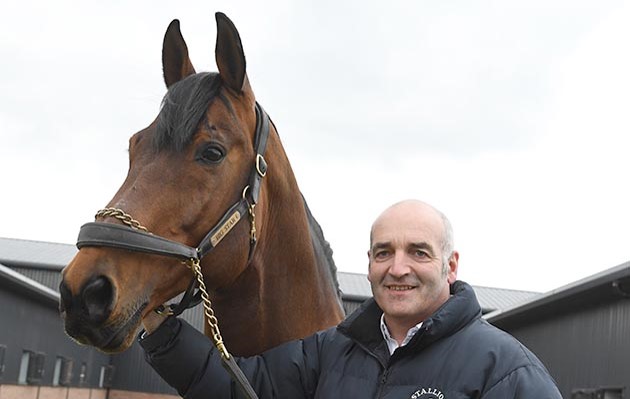

During his lifetime, a healthy stallion will produce untold billions of sperm, but the ones that matter are the successful ones which fertilize each brood mare’s egg. When a stallion covers a mare, billions of sperm are sent per ejaculate. As only one is needed for a successful pregnancy, surely one from those billions is guaranteed to make it? Unfortunately, that isn’t always the case.
Let’s trace the journey of the sperm and see how we can support the stallion to maximize his fertility potential.
Stallion Development
Stallion semen production starts in the two testes, whose principal role is to produce spermatozoa along with the primary male sex hormone, testosterone. At birth the testes, dependent on breed, are approximately between five and ten grams. They are usually born with both descended into the scrotum, though not all are and it is perfectly naturally for them to descend a little later in some. Some testicular growth occurs in the colt’s first year, but rapid development really builds from eighteen months onwards. It is at this time that they begin to produce sperm, and the colt becomes fertile. In some stallions the testes don’t reach full maturation until 12 or 13 years of age.
In the adult stallion billions of spermatozoa are produced every day, which calculates out at around 70,000 every second! When not actively covering mares, any excess of stored sperm is excreted through the urine.
Spermatogenesis
Although thousands of sperm are produced every second it takes a little longer for them to grow and mature, around 54 to 57 days in most stallions. The process of sperm development is known as spermatogenesis, and is split into three phases.
In the first phase, germ cells, which are the body’s reproductive cells, begin their differentiation and subsequent division into ‘spermatogonia’, where they increase their number. The second phase is known as ‘meiosis’ a process of cell division that reduces the chromosome numbers by half compared to the parent cell, to form ‘spermatids’. The chromosomes carry the genetic information from the parent, and this splitting explains why only some of their characteristics may be passed on. The final phase, known as spermiogenesis, sees the spermatids mature, until they are released into the central cavity of the testis’ tubules, where they are referred to as ‘spermatozoa’. Each phase takes around 18 to 19 days. Once complete the spermatozoa are passed to the epididymis, a long coiled tube of the testis, for final maturation and storage. From here they are ready to leave the testes. At ejaculation the spermatozoa leave via the deferent ducts, and along elongated pouches where glandular extracts add to the ejaculate to produce the final whitish fluid known as semen.
A typical stallion ejaculate contains between three and twenty billion sperm, so with that many determined swimmers heading to the egg, we may think that a successful covering is guaranteed. Unfortunately, that isn’t the case. Stallions show lower levels of fertility compared to other livestock species, often because they are selected based on competitive results rather than reproductive fitness. A satisfactory pregnancy rate for natural covering may be only 75%, and with the increase in the use of reproductive technology, such as Artificial Insemination (AI), that demands high quality semen, it is important to regularly assess semen quality through the season.
Semen Analysis
Although there are now an increasing number of semen assessment parameters available, the two most widely used are Motility and Morphology.
Semen Motility measures the percentage of total semen who are motile, i.e. capable of motion, as obviously the ability to move is vital to the semen’s success rate. However, motility alone doesn’t give us a reliable result, with the preference being for ‘Progressive Sperm Motility’ (PSM), which shows the percentage of semen moving in a rapid linear direction, i.e. towards the egg! A percentage PSM of around 50-60% is considered good.
Microscopic examination will also reveal Semen Morphology, i.e. what percentage of semen are well in good shape with no obvious structure changes or damage. Although there are exceptions, perhaps not surprisingly, the higher the percentage of morphology defects, the lower the fertility of the stallion. Morphology issues can be split into three areas. A primary defect is one occurring during spermatogenesis, i.e. a problem that is testicular in origin. A secondary defect is damaged occurred in the journey of the semen to the mare, i.e. along the ducts. Lastly, a tertiary defect developed in vitro at collection or during semen handling, i.e. post-ejaculation. Around fifty percent morphologically normal is considered typical in stallions.

Researchers find that even small improvements in both motility and morphology, of 2-3%, can make huge differences, particularly with success in advanced reproductive techniques such as semen freezing and sexed semen. Therefore, all options should be taken to improve PSM and morphology, even in stallions who already have good semen characteristics, as small improvements can bring huge dividends.
Fertility for Stallions
NAF Five Star Fertility for Stallions provides innovative targeted nutrition to support optimum stallion fertility and behaviour. Designed by the Veterinary and Nutritionist team at NAF, and developed in conjunction with some of the world’s leading experts in stallion fertility, Five Star Fertility for Stallions combines key nutrients, including natural vitamin E, organic selenium, pre and probiotics, adaptogenic herbs, carnitine, arginine and vitamin A to optimize motility and morphology in all stallions.
It is recommended to start Five Star Fertility at least six to eight weeks prior to covering, to allow for spermatogenesis, and to feed daily through the breeding season.
Five Star Fertility for Stallions helps every sperm on their journey to the egg, and supports your stallion’s potential for reproductive success, whether natural covering or A.I.
Tips for Stallion Nutrition

Expert Opinion
“After witnessing the results first hand, we recommend Five Star Fertility for all stallions as a matter of course.”
Tullis Matson. FRAgS, DL Hons Doctor of Technology. Stallion A.I. Service.
NAF © 2024 | NAF is a trading name of Greencoat Limited, registered in England & Wales. Greencoat Ltd - Registered address: Weston Centre, 10 Grosvenor Street, London, W1K 4QY. Registered Number: 1560 108. Registered in England & Wales.Number: 1560108 VAT Registration Number: 378 9295 80